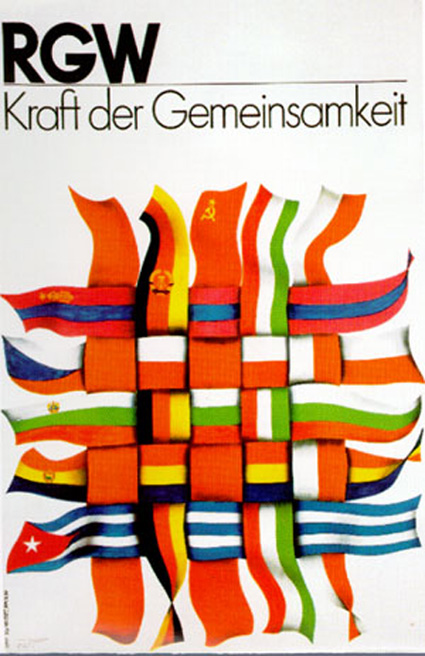













INTRODUCTION | DOCUMENTS | IMAGES | MAPS | EDITOR
|
In January 1949, Bulgaria, Poland, Romania, the Soviet Union, Czechoslovakia, and Hungary formed the Council for Mutual Economic Assistance (COMECON); the GDR joined in September 1950. In 1962/63, a supranational strategy failed on account of Romanian opposition; as a result, cooperation between member states was pursued mainly through bilateral agreements and the coordination of the states’ respective five-year plans. Trade with other COMECON members accounted for almost 70% of the GDR’s total foreign trade. Within this group, the Soviet Union was the GDR’s biggest trade partner by far: it alone accounted for about 38% of all GDR imports and exports. COMECON import and export conditions were quite advantageous for the GDR economy: raw materials were acquired from the Soviet Union at prices below those available on the world market and currency conversion was not required for imports. The fact that different COMECON members states enjoyed various levels of economic development caused problems, however, as did the recurring inability of certain members states to deliver products. In addition to the aforementioned countries, Mongolia joined the COMECON in 1962, and Cuba joined in 1972. Both are represented on the poster reproduced below.
Otto Kummert/Dewag Verlag für Agitation und Propaganda |
 print version
print version return to image list
return to image list previous image
previous image
